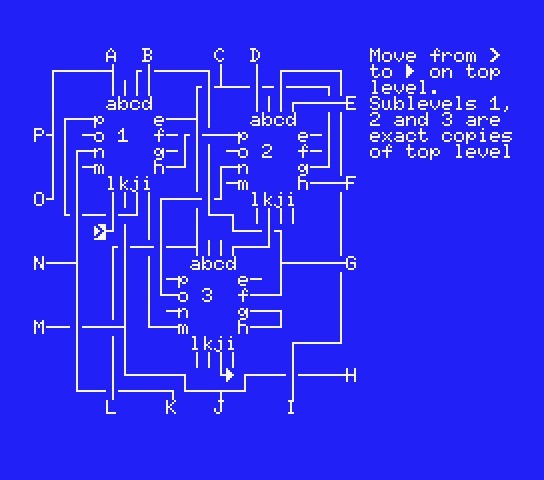 Fractal maze
Fractal maze Fractal maze
Fractal mazeHere it is:

You need to get from "−" to "+" on top level. Sub-levels A, B and C are exact copies of the top level.
I think it is incredible that it looks so simple. Nothing is hidden, nothing is obscured, the picture is entire maze. You do not even need a computer, there is no complex mechanic, you only need to keep track of your descent stack.
I could not solve the puzzle by just looking at it, so I decided to make a short vim macro to track the movement. I estimated it should take 20-30 minutes, so 10 hours later it actually started working. Here it is, in case somebody is interested: fractal-m.vim. A lot of that time went into ascii rendering of a maze (by hand).
So I had a nice ascii network with reasonably simple rules and virtually no redrawing, but still complex enough, so I have not solved it yet. This souned like an opportunity for a screen0 MSX Basic game.

The biggest challenge was to compress my ascii rendering (which was 32 lines tall) into ≤24 lines rendering which uses box drawing characters. I also had to change naming scheme. Here sub levels have numeric names and exits are letters of the alphabet.
The game is
small enough to be "typed in" (after all, I did it). Typing boxdrawing
characters was easier than I expected.
At this point I do not see how I can compress the maze representation so it
would fit into a 3-line game, but I will keep
looking, I was surprised before.
There is a 3-line implementation of same game rules
with a smaller (but still very challenging) maze.